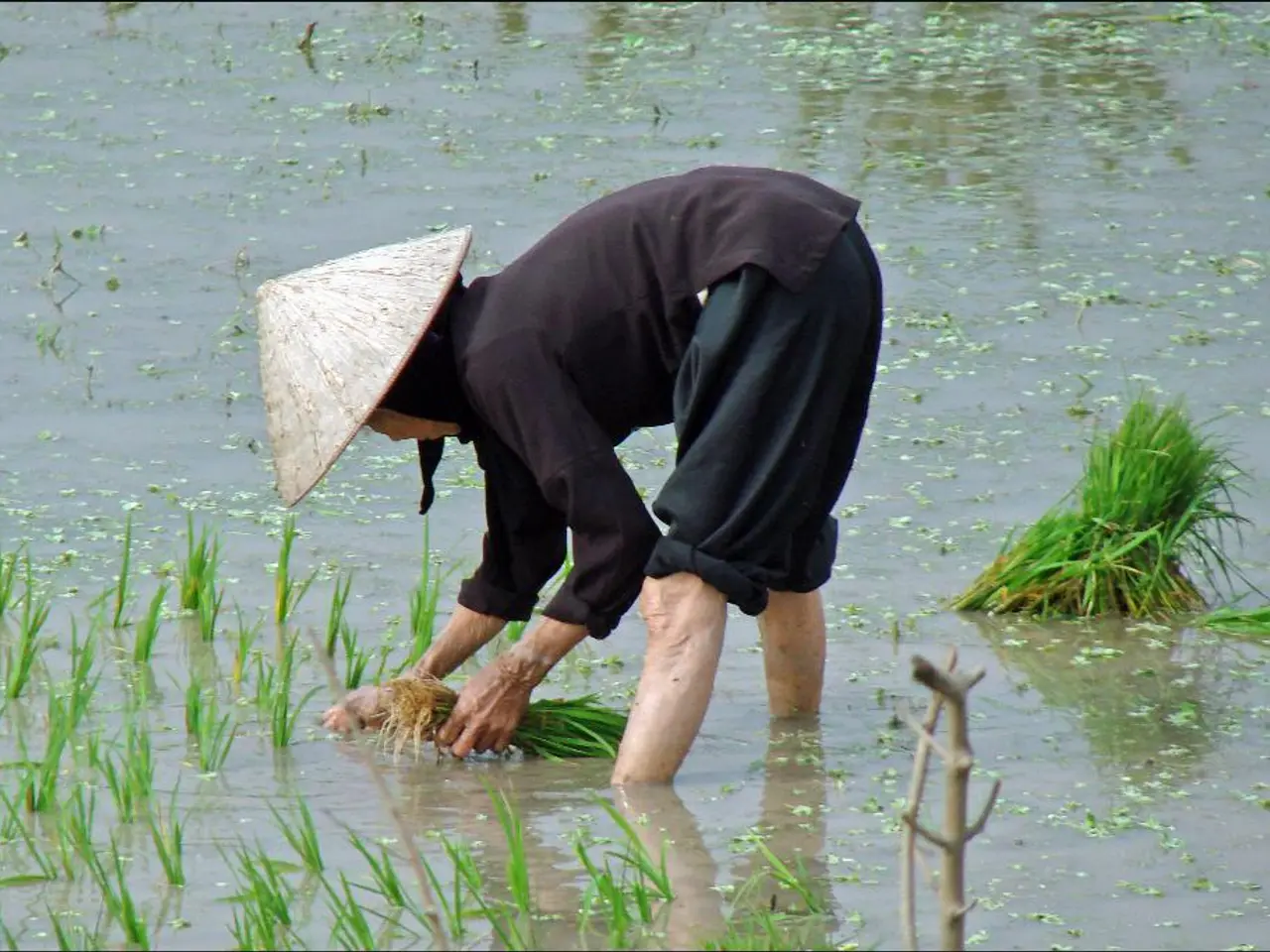Tips for seed sowing success, as recommended by gardening professionals, for the upcoming growing season
Starting a new gardening project can be an exciting venture, and one of the first steps is deciding whether to sow seeds indoors or directly outdoors. Here, we delve into the key differences between the two methods, offering practical advice for both scenarios.
**Sowing Seeds Indoors:**
Indoor seed sowing provides an advantage when it comes to controlling environmental factors such as temperature, moisture, light, and airflow. By starting seeds indoors, gardeners can enhance germination success and seedling health, as they have the ability to create a nurturing environment for their plants. Ideal temperatures for indoor seed sowing vary by seed type, but generally fall between 60-80°F (16-27°C).
When sowing seeds indoors, it is essential to maintain proper moisture levels. Keep the germination medium damp but not soggy, similar to a wrung-out sponge, to prevent seeds from drying out or being submerged. Proper ventilation is also crucial to prevent mold during germination.
Indoor seed sowing also allows for greater flexibility in timing. Gardeners can start cool-weather crops in late summer or warm-weather crops early in spring before transplanting outside once conditions stabilise. Indoor sowing is an excellent method for getting a head start on the growing season, especially when outdoor conditions are too hot, cold, or unpredictable.
**Sowing Seeds Outdoors (Direct Sowing):**
Direct sowing is a cost-effective and straightforward method that avoids transplant shock, encouraging stronger root systems. However, seeds and seedlings are exposed to environmental risks such as weather fluctuations, pests, and competition from weeds. This makes direct sowing less reliable in regions with short growing seasons or variable weather.
The ideal soil temperature for direct sowing depends on the type of seed. Cool-season crops like peas, lettuce, spinach, and kale germinate well at soil temperatures of 40°F (4°C) and above. Root vegetables like carrots, onions, turnips prefer 50-60°F (10-16°C). Warm-season crops like corn, beans, squash, melons need 60-70°F (16-21°C) or higher soil temperatures to germinate successfully.
When direct sowing, it is essential to prepare the soil well, removing any stones and lumps that might prevent emerging seedlings from pushing through. Sowing seeds sparingly and thinning the emerging seedlings regularly is also crucial to ensure the plants have enough space to grow.
**Choosing the Right Method:**
By considering these factors—especially soil temperature, climate, and plant sensitivity—you can decide whether to start your seeds indoors or directly sow outdoors to maximize your gardening success.
Carol Klein, a renowned gardener, recommends using half seed trays for indoor seed sowing, finding them strong, stable, and manageable. For direct sowing, she suggests making a shallow 1.5cm trench with a stick in finely worked soil for sowing biennials.
Growing plants from seeds is an economical method, as one packet can yield multiple plants. Different peat-free seed composts are available, but seeds will germinate in most composts. Finer seeds, such as poppies, should be spaced out with care to prevent fungal disease.
In conclusion, understanding the differences between indoor and outdoor seed sowing is essential for gardening success. By considering factors such as climate, soil temperature, and plant sensitivity, you can make informed decisions to ensure the best possible outcomes for your garden.
- Indoor seed sowing offers gardeners the advantage of controlling environmental factors, such as temperature, moisture, light, and airflow, to enhance germination success and seedling health.
- When direct sowing outdoors, seeds and seedlings are exposed to environmental risks, making the method less reliable in regions with short growing seasons or variable weather.
- By considering factors like soil temperature, climate, and plant sensitivity, choosing the right method between sowing seeds indoors or directly outdoors can maximize gardening success.
- Growing plants from seeds is an economical method, as one packet can yield multiple plants, with various peat-free seed composts available, though finer seeds should be spaced out carefully to prevent fungal disease.




